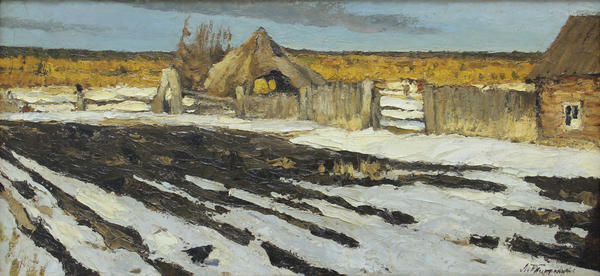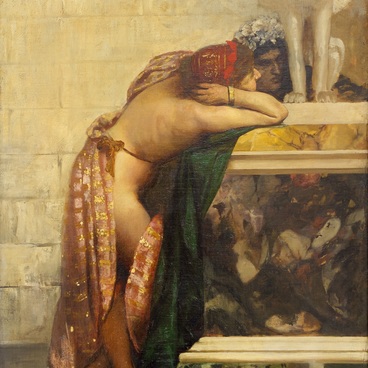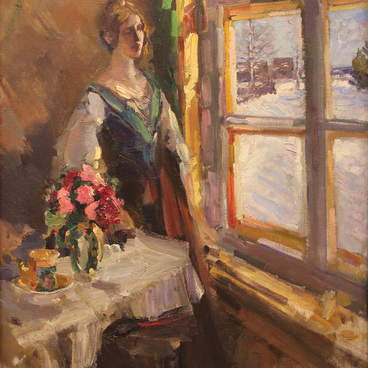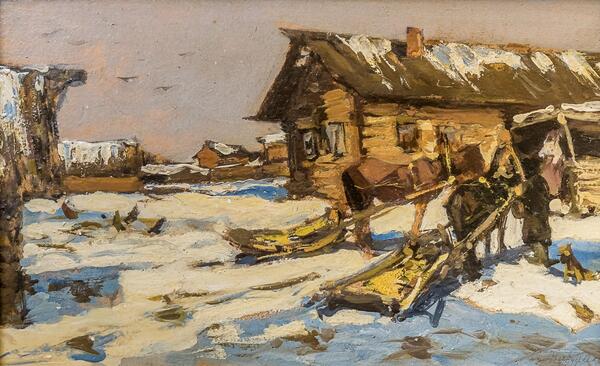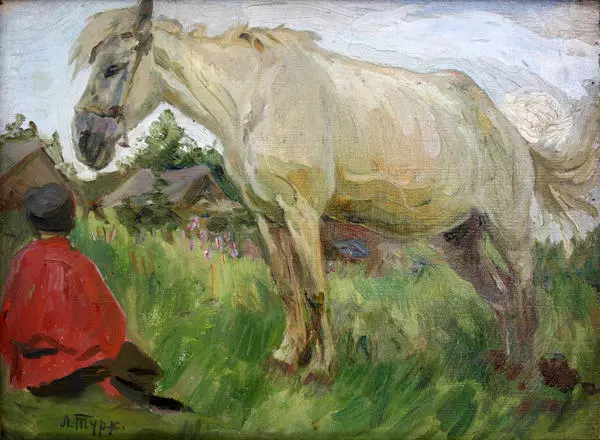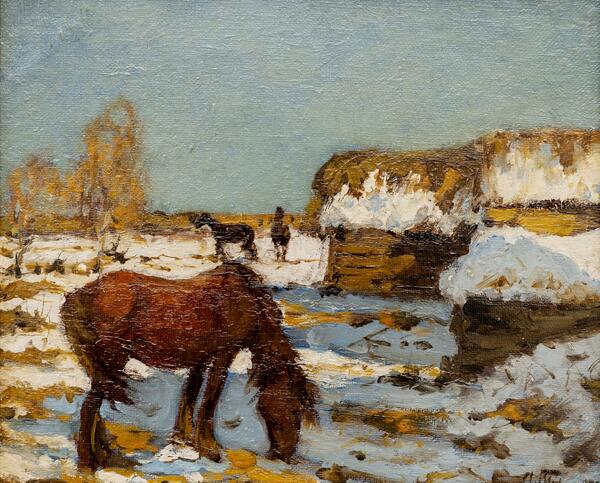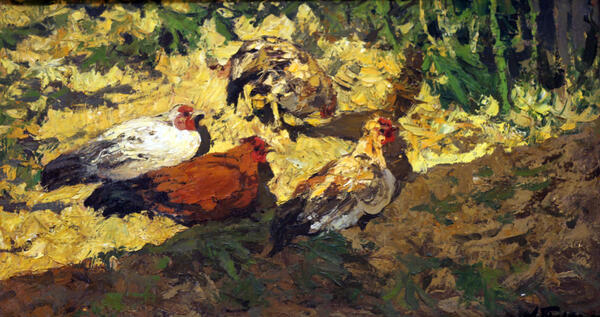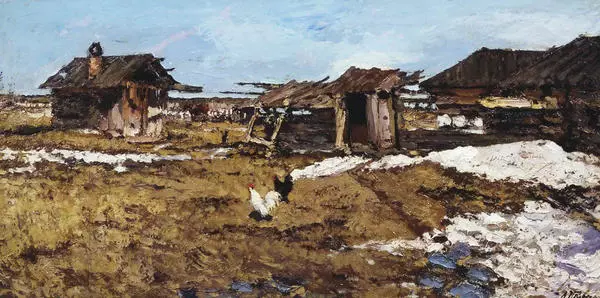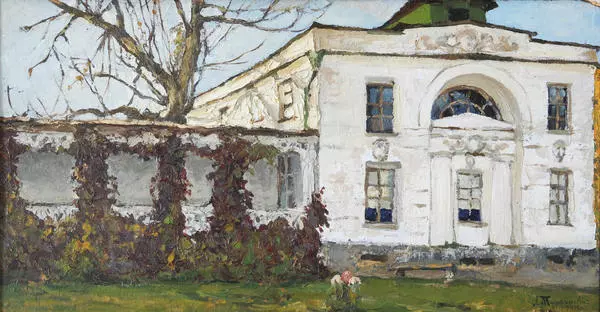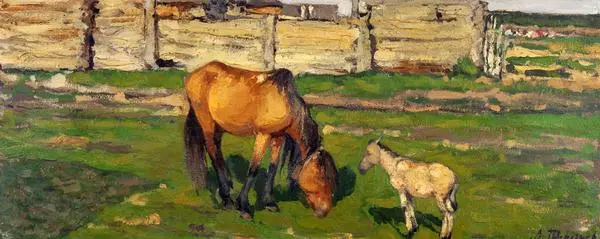Leonard Turzhansky was a reputable master of lyrical landscape. The artist was inspired with unique quiet beauty of Russian nature, and with unhurried and peaceful suburban and rural life.
Turzhansky was one of the first Russian artists to turn to impressionism, a current in art that arose in France in the last third of the 19th century as opposed to academic tradition in painting. Turzhansky created clear-cut compositions, not burdened by excessive small details. He painted with wide and powerful, almost crude brush strokes, which added expressive color contrasts to his canvases.
Every spring, Turzhansky visited his home village of Maly Istok near Yekaterinburg. It was there that he painted the landscape Spring that is on show in the museum, in 1910.
The landscape has a static composition, with a snowy field in foreground. The earth and snow are painted in pastose technique, with dense opaque brushwork in a pronounced diagonal direction, which impart the canvas with an expressive relief. In the background, Turzhansky painted a hut, a hedge and a haystack, and behind them, a yellow field and gray-blue sky.
Spring is devoid of any artistic effects, while the color scheme plays a major role in this landscape. The painting was created in warm colors, with predominance of saturated earthy tones, such as dark brown and yellow ocher. Turzhansky built the color scheme of the painting based on expressive quality of the chosen colors, instead of richness of the palette.

